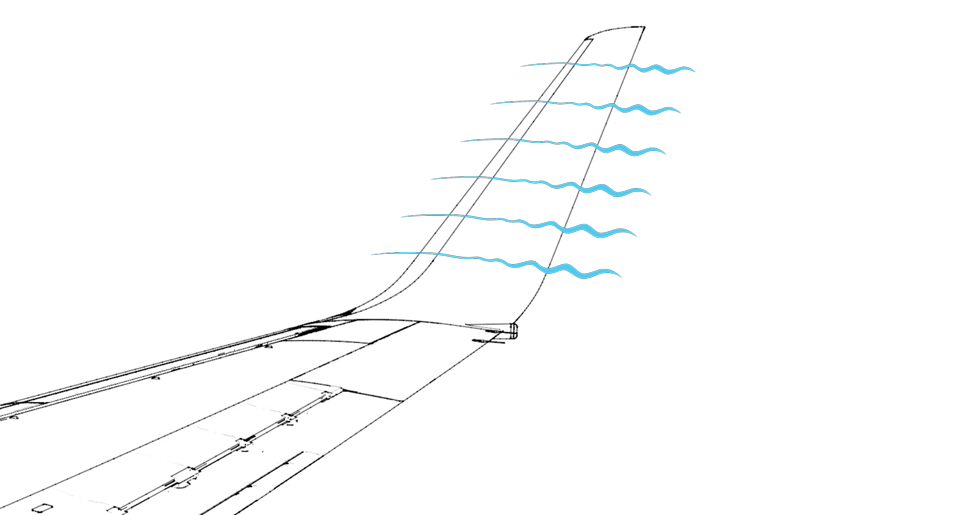The new 737 MAX AT winglet is the most efficient ever designed for a production airplane. This is the story of the ingenious manipulation of aerodynamics that makes this distinctive design so efficient.
The most efficient winglet on any airplane

Without any winglets, the air flow over the tip of every wing will roll up from the high pressure area under the wing to the low pressure area above it.

When the wing is moving forward at high speed, airflow over the tip of the wing is forced back, with the upward and backward flow elements combining to form vortices. These vortices cause lift-induced drag, lowering the efficiency of the wing.
737 Blended Winglet

With the original blended winglet design, the airflow at the tip is used to create lift on the winglet, primarily vectored toward the fuselage. There is also a small element of lift vectored forward, reducing the lift-induced drag. Both these elements improve the efficiency of the wing.
737 MAX AT Winglet

737 Blended Winglet

On previous winglets, the drag due to friction from the airflow over the winglet is one of the main detractors from efficient airflow.
737 MAX AT Winglet has Natural Laminar Flow

With the "Natural Laminar Flow" properties of the 737 MAX AT Winglet, this is solved by Boeing using detailed design, surface materials and coatings that enable laminar – or smoother – airflow over the winglet. This further reduces drag and increases fuel efficiency.
The overall combination of advanced design and advanced airflow control means that the 737 MAX AT Winglet delivers the greatest contribution to improved fuel efficiency of any winglet.


